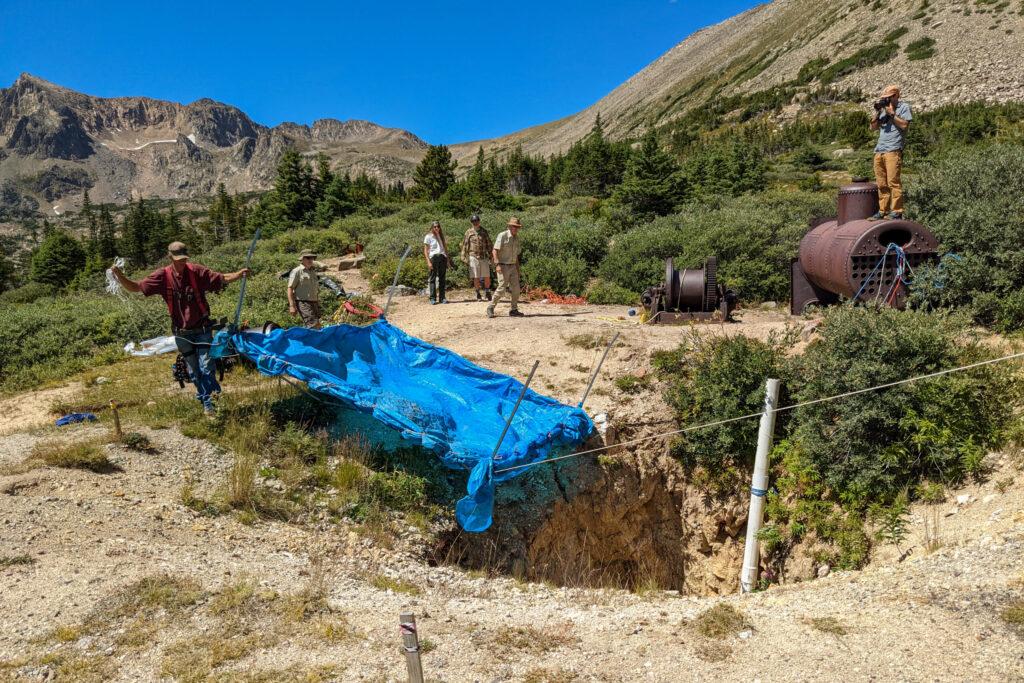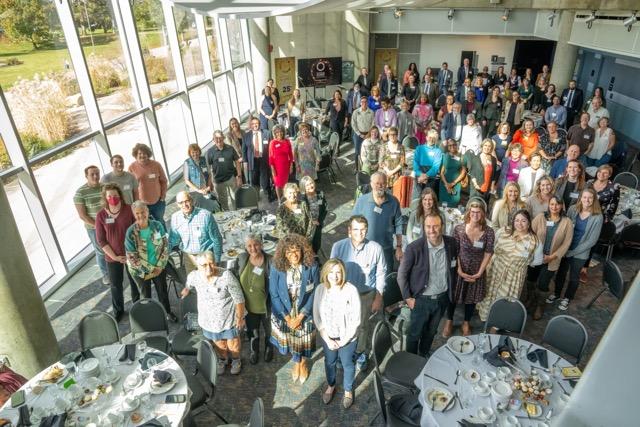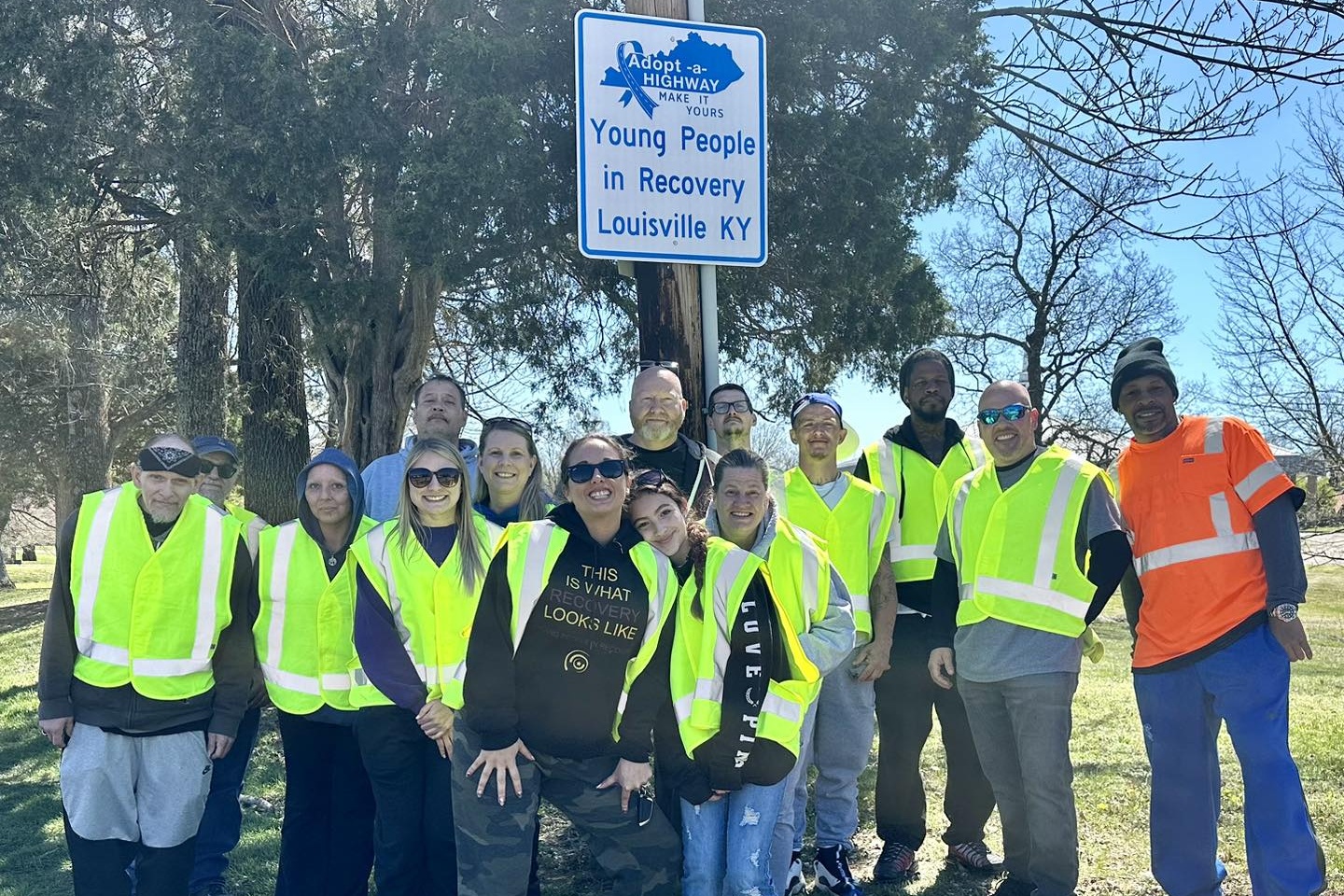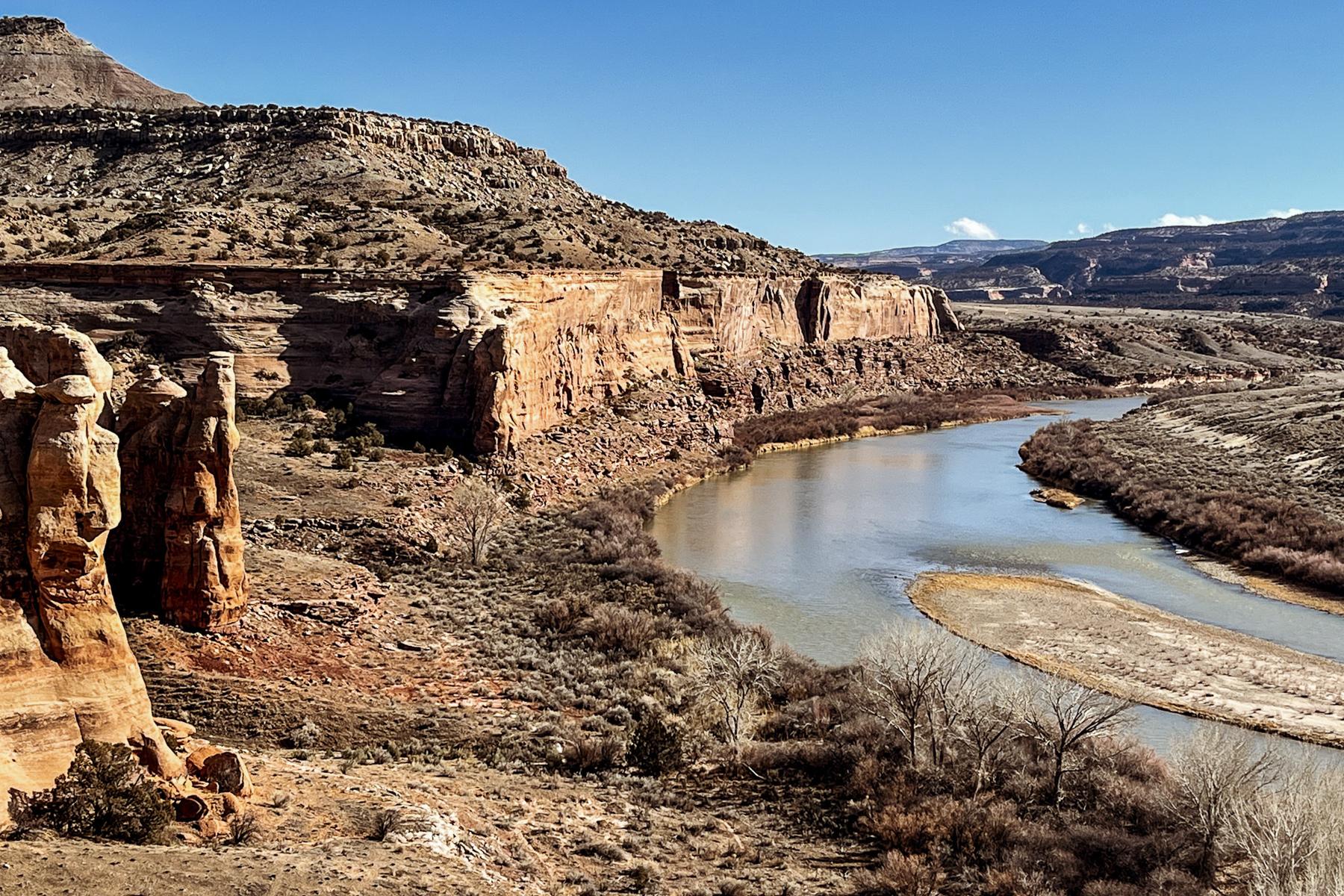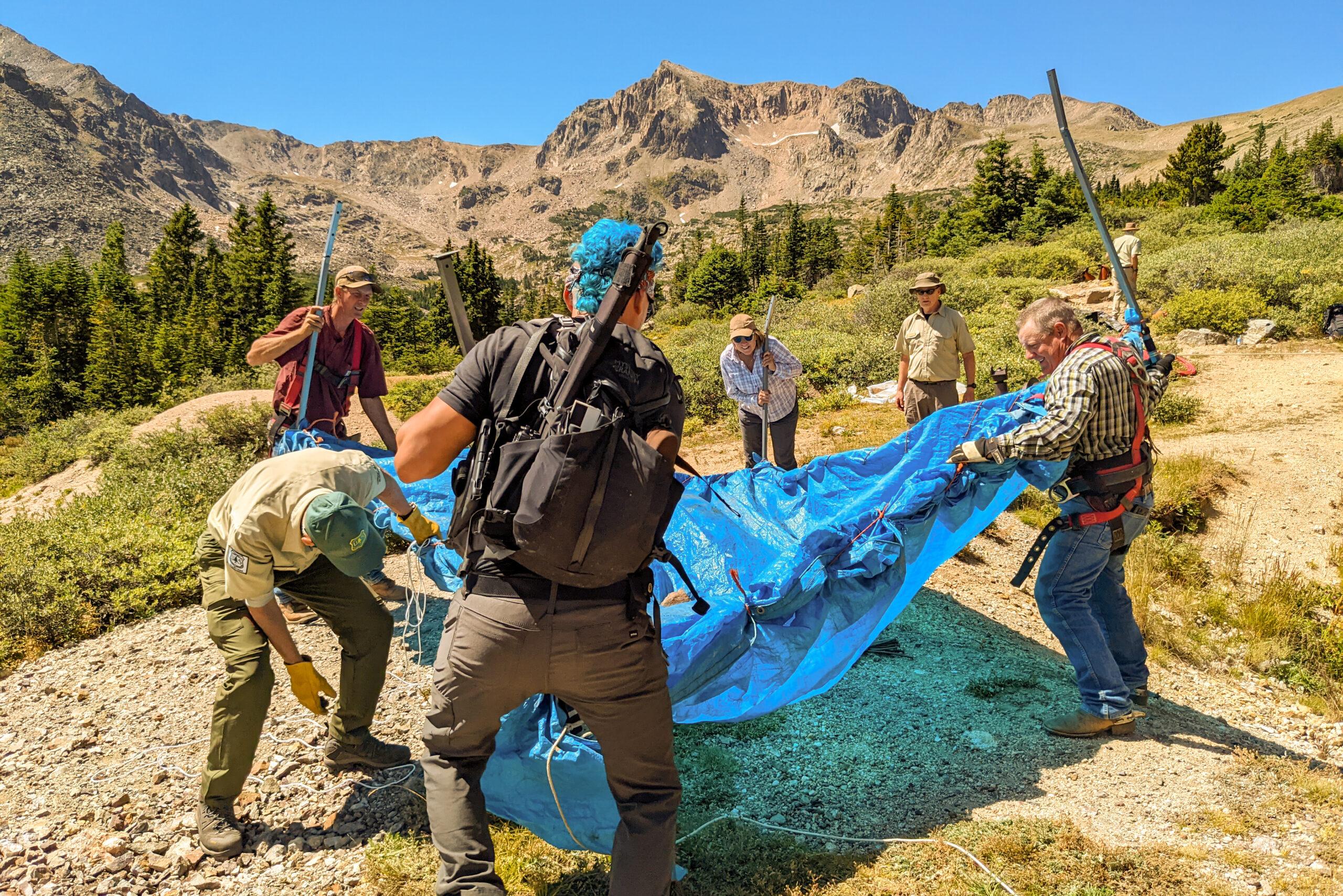
Erica Crosby’s job is straightforward: Make sure no one ends up at the bottom of a mine shaft.
Colorado's long history with loosely regulated mining has given Crosby, the senior project manager for the Colorado Division of Reclamation, Mining and Safety, no shortage of work.
Since launching its public safety mission in the 1980s, the division has closed or protected about 10,000 sites out of around 23,000 known abandoned mine openings across the state. With so many other mines hidden or undiscovered, Crosby suspects the actual total could be twice high.
"There's still a lot more out there, too," she said. "It's shocking."
One location jumped to the top of her priority list last year. Volunteers working in the Indian Peaks Wilderness noticed erosion had reopened a shaft hundreds of feet deep at the 4th of July Mine, creating a dark and dangerous pit amid a collection of rusted gearboxes and old storage tanks.
The location of the abandoned mine immediately alarmed the officials with the state mining office and the U.S. Forest Service. Its proximity to a popular hiking trail meant a pet or person could slip into the 150-year-old copper and silver mine, a type of accident Crosby said happens a handful of times a year in Colorado.
She also worried it could draw the attention of amateur explorers. Over the last few years, her office has seen a surge of videos on TikTok and YouTube taking viewers inside Colorado's abandoned mines, leaving the filmmakers at risk of hazards like floods, cave-ins and bursts of toxic air.
Despite those problems, she sees the videos as "a mixed bag" for her office. In one case, a video posted online led her office to a previously unknown mine in Boulder County. The state later sealed and remediated the site.
"We try to use social media to our benefit," Crosby said. "It's bad because it brings everyone there. But, in a way, it's showing us some of the areas we obviously missed."
A human-made hazard in an "untouched" wilderness
The 4th of July Mine provided an extra challenge for the state and federal officials as it tried to say ahead of accident and amateur explores.
The location is about two miles inside a designated wilderness area, where federal law bans any motorized or mechanized equipment. Trez Skillern, the abandoned mine program manager for the Arapaho and Roosevelt National Forests, said those limitations ruled out the possibility of driving or flying in materials and equipment to repair the mine site.
Congress wrote the limitation into the 1964 Wilderness Act to ensure certain places "contrast with those areas where man and his work dominate the landscape." Early environmentalists fought for the rule, arguing it preserves the opportunity to overcome natural challenges without the benefits of advanced technology.
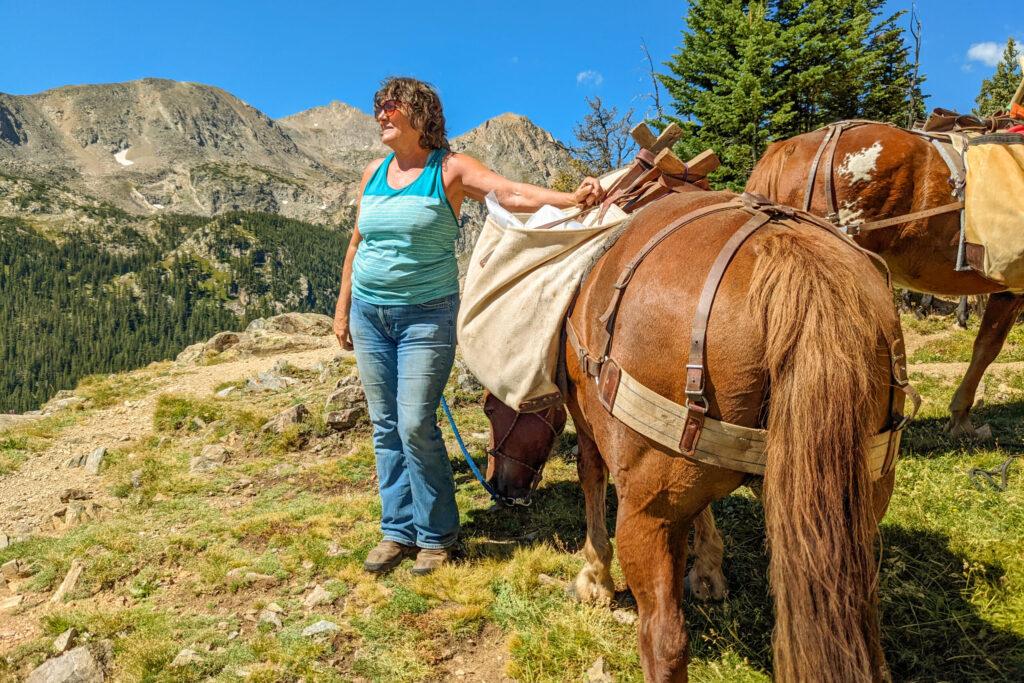
Skillern's office helped craft a $42,000 plan to fix the mine within the limitations of the wilderness protections. The U.S. Forest Service funded about two-thirds of the job and Colorado covered the rest.
"One reason people escape into the wilderness is the risk associated with it, but this mine is a man-made risk," she said. "Not everyone knows how to handle safety around this opening."
To execute the mine-repair plan, federal and state officials turned to Cindy McCollum, a lifelong resident of Eldora, Colo., who owns a team of horses and an excavation company specializing in mine reclamation.
How to foam a mine shut
On a sunny morning last month, McCollum unloaded a team of horses near the 4th of July trailhead. She packed their saddlebags with 25-pound plastic sacks filled with two different colored liquids.
Each bag contained polyurethane foam, better known as "PUF." At the mine site, McCollum's workers would remove a plastic barrier and massage the liquids together, causing them to react and expand into a rigid construction material.
She planned to treat the mine shaft like an open bottle of wine. The foam would form a "cork" to stop anyone from falling or climbing inside. Dirt would then be layered on top to further camouflage the mine shaft.
While McCollum appreciated the work, she thinks the federal rules should allow mechanical equipment to assist with mine remediation. A decade in the U.S. Navy gave her additional expertise in using helicopters to deliver heavy equipment to remote areas.
"I care for this area a lot, but I think they should allow a chopper to come in," she said. "They could have this done in 15 minutes and there would be less impact on the trail."
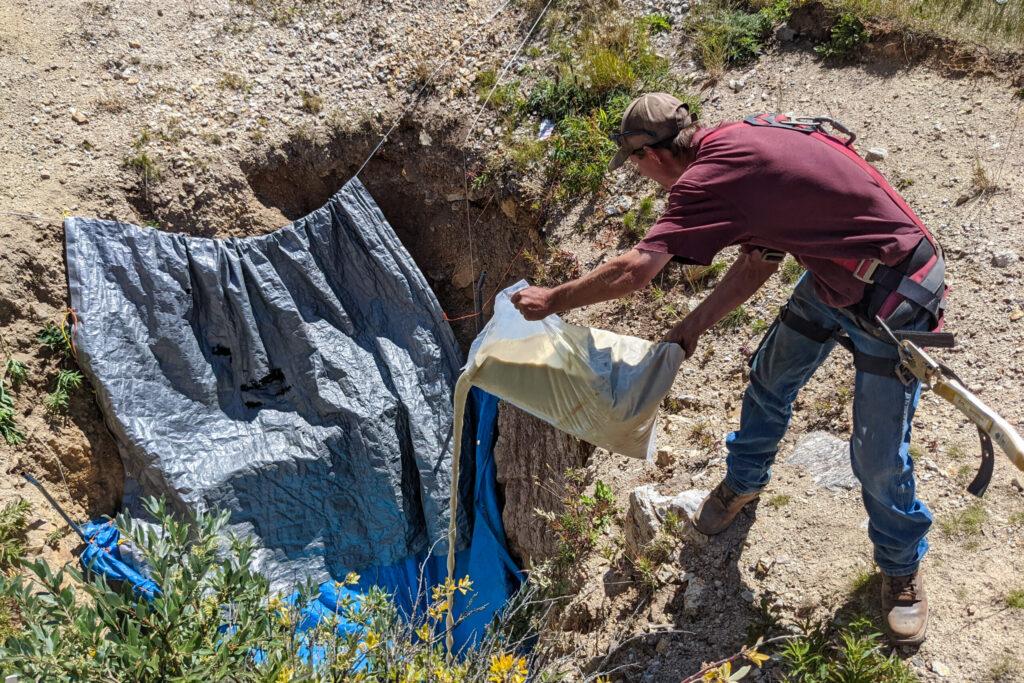
But McCollum recognized federal law ruled out the possibility. She wore a blue blouse and jeans as she led a train of horses past a series of surprised hikers. After delivering an initial load, she returns to the trailhead for more foam while her employees set about sealing the mine shaft.
The process wasn't elegant. To form a foundation for the foam, contractors secured a tarp to a wide party tent frame. It was flipped upside down and shoved into the mine opening.
Erica Crosby, the state project manager, then watched the workers pour 125 bags of foam into the hole. The liquid radiated heat as it expanded and plugged the opening.
Federal funding in the federal Bipartisan Infrastructure Package enacted in 2021 should free state dollars for similar mine reclamation projects in Colorado, Crosby said. At the same time, she’s confident people will still find abandoned mines hidden in the nooks and crannies of the Rocky Mountains.
She just hopes people report the locations to the state — and don't venture inside.
"If you want to explore a mine, there are tourist mines where you can do it safely," Crosby said.
